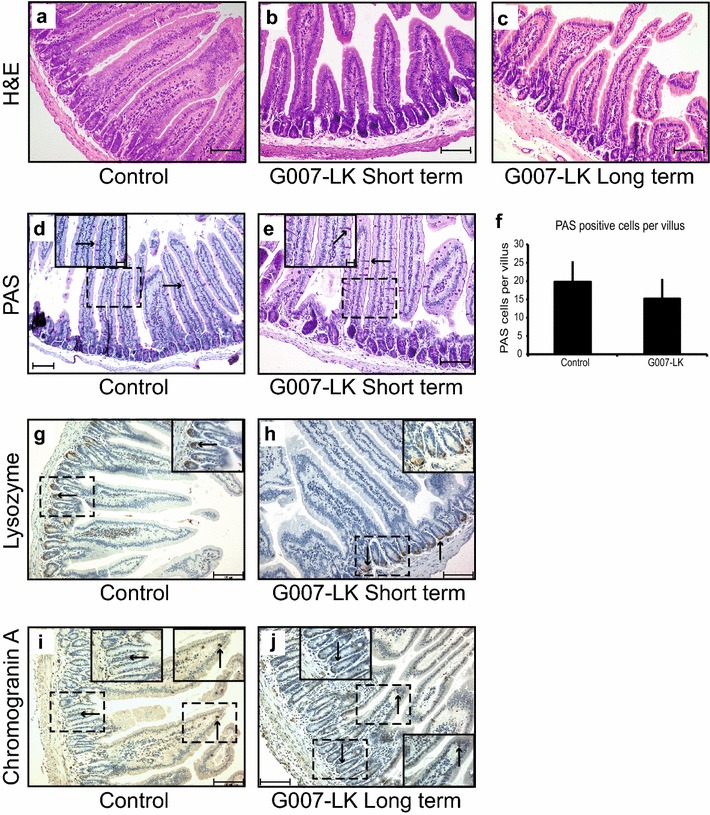Fig. 5.

Morphology and cellular composition of duodenal tissue. (a–c) Haematoxylin and eosin (H&E)-stained sections from control (a), short-term gavage, 50 mg G007-LK/kg body mass (b), and long-term enriched chow, 100 mg G007-LK/kg chow (c) treated mice. d, e Periodic acid-Schiff (PAS)-stained cells (indicated with black arrows) were identified in duodenal tissue samples from control (d) and G007-LK (e) treated (gavage 50 mg G007-LK/kg body mass) mice (inset shows enlargements of boxed areas in main panel). f Quantification of the average number of PAS-positive cells per villus in duodenal tissue sections from control and G007-LK-treated mice (mean ± SEM, n = 3). g, h IHC of duodenal tissue sections, stained with an antibody against Lysozyme, from control (g) and G007-LK treated, gavage 10 mg G007-LK/kg body mass (h) mice (inset shows enlargements of boxed areas in main panel). (i, j) IHC of duodenal tissue sections, stained with an antibody against Chromogranin A (positive cells indicated with black arrows), from control (i) and G007-LK-treated, long term enriched chow, 100 mg G007-LK/kg chow (j) mice (inset shows enlargements of boxed areas in main panel)
